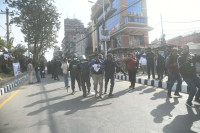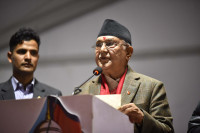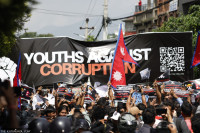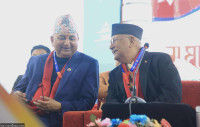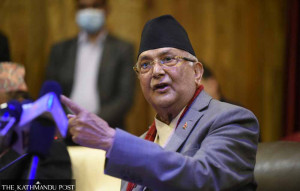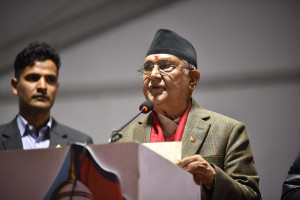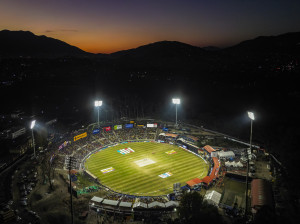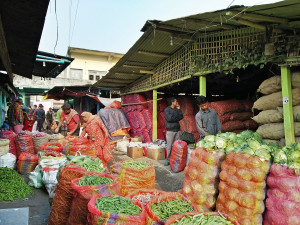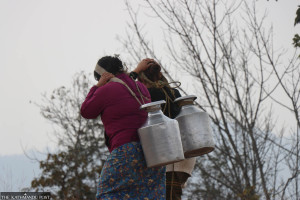Editorial
Central concern
Why do victims of all kinds from around the country have to descend to Kathmandu to be heard?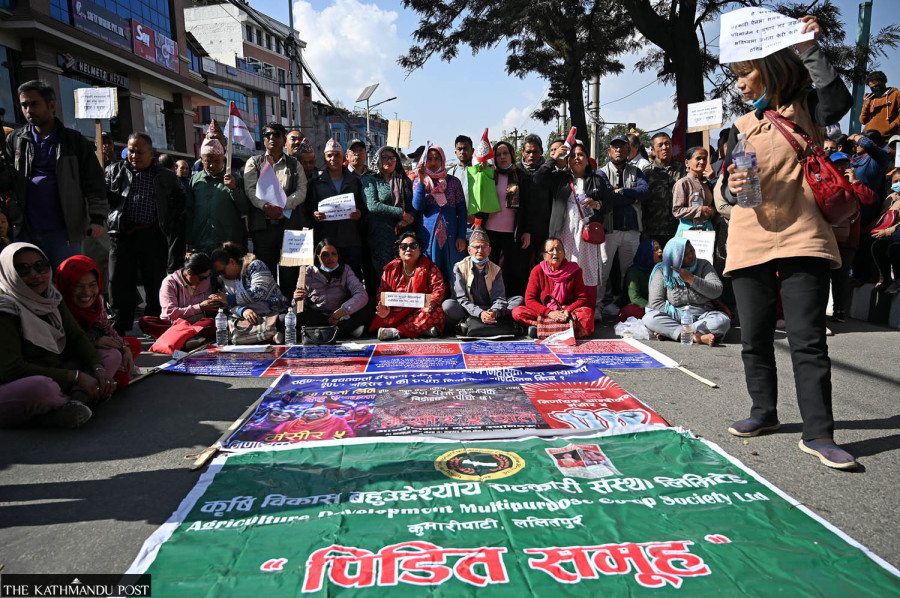
All roads lead to Singhadurbar when it comes to addressing the citizens’ concerns. It has been nearly a decade since Nepal embraced the federal system in 2015. Three tiers of governments have been in place since 2017. But people still have to frequently travel to Kathmandu from remote districts even for work that can be easily done by local government agencies. Teachers have continuously protested at the Maitighar-Baneshwar stretch for a month demanding a new education law. Eventually, the representatives of the Nepal Teachers’ Federation and the government talks team led by the education minister reached an agreement on ending the protest after holding extensive dialogue. Resident doctors in private medical colleges took to streets shunning their duties in hospitals demanding increment in their allowances. They resumed work after the federal government addressed their demands on Monday.
As authorities were more focused on talks with agitating teachers and doctors, cooperative victims protesting at Ratnapark for weeks felt ignored. They staged a demonstration, half naked, on Monday. Likewise, months ago, various groups such as the Banke-based human rights activists led by Ruby Khan held weeks-long protests at Maitighar demanding justice for Nirmala Kurmi, who disappeared mysteriously in 2010, and remains missing. Sugarcane farmers protesting with ploughs and yokes seeking payments for their crops from sugar mills and loan shark victims sitting-in, a stone throw away from Singhadurbar, has been a yearly routine.
An unwritten rule has been established that people must travel to the federal capital and stage protests that disrupt daily lives and cause havoc with normal life in Kathmandu, if they want their voice heard. But then most demands raised by the likes of farmers groups, loan shark victims, micro-credit and cooperative victims and those seeking justice for innocents killed by local gangsters can (and should) be addressed by local authorities. If the sub-national governments, police and judiciary do their basic duty, most such issues can be solved in respective districts under the regular process. It is thus vital to make regular government agencies at local, district, provincial and federal levels answerable. The other side of the story is that the local units are constitutionally empowered but in practice have very limited rights and resources. It is the state’s duty to equip them financially and logistically.
Why are issues taken up seriously only after months-long protest in the street or Parliament? Why do we need special parliamentary committees or other special commissions to heed people’s plight, about which our elected representatives and state agencies are well aware? The government in mid-January introduced some ordinances to change over two dozen laws, supposedly to expedite service delivery. One new provision states that the civil servants shall provide service to the public within seven days of application. They have to either accomplish the task or furnish a valid reason for not being able to do so. The law makes the concerned officials liable not only for abuse of authority but also for indecision and inaction.
Again, if the provision is strictly enforced, most issues of public concern can be resolved from sub-national governments. Unfortunately, many provisions are introduced not for implementation but as a gimmick. Strengthening state agencies and doing things via the regular process is the right approach in order to institutionalise the federal democratic system. On the other hand, centralising everything in Kathmandu and making decisions through special bodies undercuts the federal spirit. It has become vital to restore public faith in sub-national government agencies to keep alive the spirit of federalism and, more importantly, to restore public faith in the democratic process.




 18.12°C Kathmandu
18.12°C Kathmandu